Cannabis Indica VS Sativa: What’s The difference?
Cannabis has been used for millennia and has more recently been grouped as two different ‘categories’, pinned up against each other for their benefits – indica vs sativa.
Due to the natural evolution of cannabis across time, no current strain is likely a pure landrace strain. Instead, all are in some way associated with each other through breeding and plant genetics.
Either way, the discussion around the benefits of the Indica and sativa groupings is still up for debate.
Cannabis strains can differ
One thing is for sure regardless of type, cannabis contains both THC and CBD, along with a host of other cannabinoids. Although the precise amounts of these constituents will vary from strain to strain, and some will contain increased quantities of minor cannabinoids at the expense of THC and CBD.
So what does sativa and indica mean?
Strains are classified as Indica and sativa due to the rough similarities in the effects each group of cannabis strains has:
- Indica is said to be physically sedating and thought to be perfect for relaxing in the evening.
- Sativa strains tend to provide a more cerebral effect which pairs well with daytime.
These groups are often thought to help influence what effect particular cannabis strains will have on a person, and these categorisations typically affect the choices experienced users make when determining which product to buy.
Generally, this is when people are in search of a particular effect over specific strains per se, although as we will discover later, there is much more to the impact felt from cannabinoids than just if the strain is a sativa, indica or hybrid…Whatever!
Sensimilla – what is it and why does it matter?
Before we dive in deep, let’s iron out some basic biology: Cannabis has both female and male varieties across strains.
However, in commercial operations, male cannabis plants are disliked due to their inability to produce high amounts of flower (and often with lower THC), which the female produces in spades.
Let’s quickly recap how things occur in nature:
- Male cannabis plants produce pollen which passes through the wind and fertilises females
- Females produce seeds which fall off the plant and end up on the top of the soil
- These seeds germinate, producing random crossbred strains grown with no intervention
Commercial growers are often looking to grow particular strains, with a specific cannabis profile in line with customer demand.
Strains are only kept ‘pure’ in situations where when they are grown without male plants, avoiding any genetical diversity which might alter the chemical make up on the plant.
These primary components: terpenes, cannabinoids, flavonoids would change in quantity and type at the mercy of nature.
When female cannabis plants are grown in the absence of males, they are called sensimilla.
Related Read: Autoflower VS Feminized Cannabis Seeds
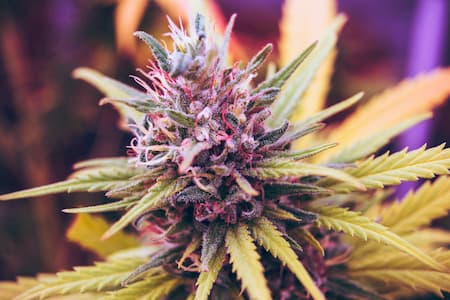
Sensimilla is preferred by both grow operators and consumers alike as it has three notable advantages.
- Increased cannabinoid content including THC and CBD
- Higher than average flowering buds
- The flowers contain no seeds
- Strains avoid genetic dilution in the absence of male cannabis plants
Most types of cannabis flower sold today (also commonly known as skunk weed) is sensimilla.
When you check in with someone who has been using marijuana for multiple generations, they will often comment weed used to have seeds and stems in it, whereas now it’s just flower.
This is a direct result of commercial breeding practices focusing on female buds exclusively in an effort to increase THC potency. Nonetheless, sensimilla is now also the focus when growing high CBD flower (containing only traces of THC).
Who knew there was a science behind those trichome rich buds eh?
What is Cannabis Indica?
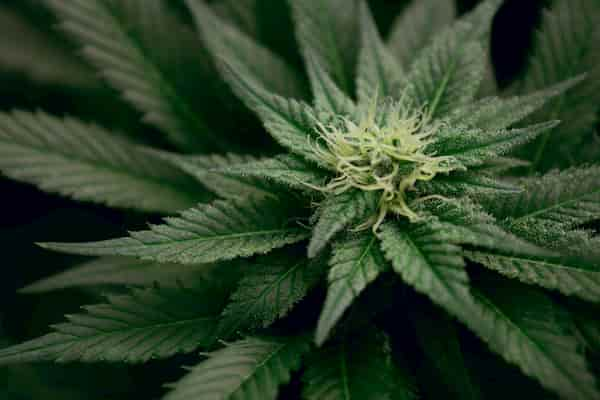
Cannabis Indica is one of the two primary types of cannabis categories. Indica plants are famous for their more body-focused effects.
The typical picture of a stoner, lying comatose in front of a TV, is probably related initially to one of many indica strains.
Indica cannabis is thought to originate from Central Asia and the subcontinent, and is found abundantly in the Afghan and Indian mountain regions.
What are the properties of Cannabis Indica?
Indica plants have some common characteristics, which make identifying them relatively easy to the trained eye.
- Often short and bushy, with the females growing more buds than their sativa cousins.
- Dark and dense green foliage, with broad leaves.
- Shorter flowering cycles than sativas, and well suited to colder climates.
- Popular Indica strains include Grandaddy Purple, Blueberry, Northern Lights and Hindu Kush.
Cannabis Indica strains have a couple of common benefits:
- Excellent for promoting sleep. Indica strains often leave users body heavy and more inclined to rest
- Indica cannabis is useful if you want to sit, watch TV and eat!
How is Cannabis Sativa Different?
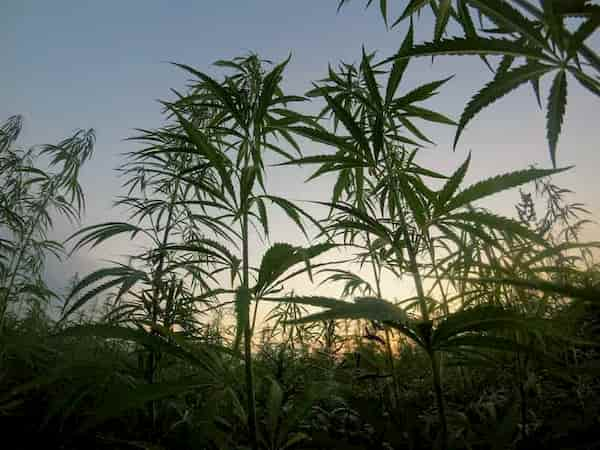
The distinct difference between Sativa and Indica is that sativas are energy drivers, associated with cerebral head highs, and less of a body heavy effect.
Sativa plants originate from hot climates with short seasons, with these stains commonly found in Central America and Southeast Asia. Sativa genetic markers are identifiable through three key characteristics:
- Tall and thin leaves in comparison to Indicas
- Light green vegetation, growing up to 12 feet tall
- Long flowering cycles
Popular cannabis sativa strains include Jack Herer, Durban Poison and Lemon Haze.
Sativas are said to be more useful during day time, with less drowsiness and more of an energetic high.
In short:
- You can still enjoy cannabis sativa strains while getting stuff done, and you are less likely to find yourself on a sofa.
- Some users report that sativa cannabis can result in increased focus.
Sativa vs Indica vs Hybrid
In nature, plants breed as they please and there is no discussion of indica vs sativa.
As we mentioned before, landrace strains are thought to be all accounted for. Instead, all cannabis strains can be likely considered a slight hybrid of indica sativa plants in some form, but some are much more weighted to one over the other and are thus classified as one instead of a hybrid strain.
Crossbreeding results in commonalties from both resulting in hybrid strains. This includes the way the plant grows and the effects it produces once harvested.
This has been on-going for thousands of years, leading to hybrid strains, which have now been bred with other hybrids on multiple occasions.
Hybrid strains can be roughly grouped as follows:
- Indica dominant: Majority of the plant profile is attributed to Indica characteristics. Examples include OG Kush and White Widow
- Sativa dominant: Majority of the plant profile is attributed to Sativa characteristics. Examples include Stardawg and Amnesia Haze
Consequently, buds often labelled as originating from sativa plants or as Indica cannabis are more probably a hybrid strain in reality.
Related Reads: Sativa VS Indica VS Hybrid, Indica VS Sativa Edibles
Hemp is always Sativa
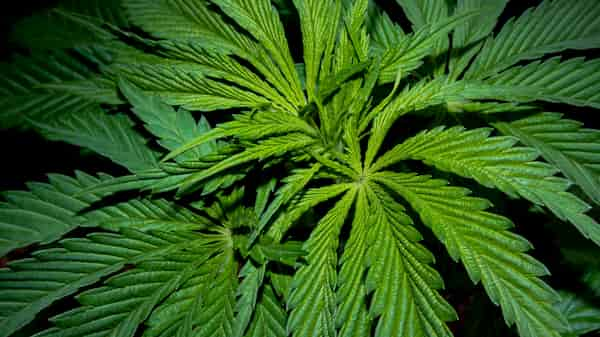
Hemp is a sub species of cannabis sativa, while marijuana strains can be either sativa or indica.
In respect to CBD, you might notice some brands label certain products as indica, and the related packaging usually suggests the product has soothing or sleep-inducing properties.
CBD in Europe is derived from hemp, and consequently, it’s always sativa. The hemp plant only contains trace levels of THC, often below 0.2%/0.3% THC.
However, there is a lot of confusion from consumers, searching for indica based CBD products, usually due to seeing indica on an incorrectly labelled CBD product.
There is a distinction to be made for CBD sold in Europe vs the States: In the US, CBD can originate from marijuana (indica or sativa) or hemp (sativa). Although, it is almost always extracted from hemp due to the economics and illegality (across many US states) of CBD extraction from marijuana.
Right…So is CBD stimulating?
While CBD originates from hemp and is a sativa, it doesn’t necessarily mean the CBD you buy is going to be stimulating. Labelling a CBD product as indica and sativa in misleading, as we noted earlier hemp is always sativa.
CBD can have different effects on different people, and some of this variability could be attributed to the exact plant the CBD is extracted from along with the dose taken.
Also, plant metabolites called terpenes are thought to play a part in determining the effects of cannabinoids like CBD.
So what are terpenes?
Why are terpenes important?
Essential oils in the cannabis plant called terpenes act synergistically with cannabinoids. There are over 200 terpenes found in cannabis plants, including in both indica and sativa strains.
You might find it surprising that terpenes are also found in your fridge if you have any citrus fruit or mint in there that specific aroma is all driven by terpenes! They are everywhere in nature with us, and affect us without us even knowing they existed until you read up on the topic!
Terpenes can alter the effects compounds like THC and CBD might have on their own.
As a result, products containing multiple cannabinoids and a full terpene profile, such broad spectrum and full spectrum products, are favoured by the CBD community.
For example, two of the most common terpenes are pinene and myrcene:
- Pinene, commonly found in pine trees, is thought to promote wakefulness.
- Mangos are rich in myrcene, which is believed to induce sedative effects.
Depending on the exact product content and mix of terpenes, products are thought to have different effects associated with the usual classification taking by indica or sativa groupings.
In theory, if you can group certain terpenes with cannabinoids, you can control the effects to a certain extent. Promoting wakefulness or sleep through the manipulation of terpenoids.
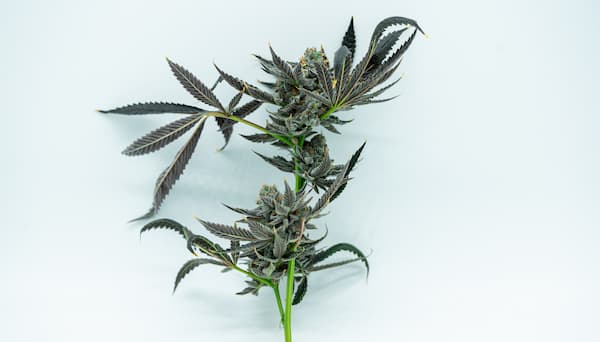
Indica and Sativa is less important
People frequently find CBD lightly stimulating in small doses. Still, other factors including depending on the time it is taken, total cannabinoid and terpene content, are thought to cause different effects.
The environment is a pivotal factor in determining the physical characteristics of the hemp plants which are harvested for CBD. Some may naturally be higher in certain cannabinoids or essential oils over others, and this can adjust the effect felt when using CBD.
These effects are thought to be determined by the cannabinoid makeup in addition to terpenes, which are believed to be more important than initially realised by researchers — together giving a more rounded picture of why strains differ in therapeutic value than their indica sativa categorisation.
Aligning with the fact most indica strains contain terpenes which are thought to promote ‘couch lock’, whereas sativas frequently contain terpenes which are thought to promote wakefulness.
Overall plant profile matters
Thus, all in all, consumers should look at the cannabinoid and terpene make up over the so-called sativa or indica versions of CBD products.
This applies in particular to Cannabidiol as CBD products sold in Europe which are genuinely from indica cannabis plants are illegal, in the EU CBD can only legally originate from hemp when sold as a food supplement.
More likely, is that the terpene profile mirrors that of an indica cannabis plant and thus is assumed to have relaxing effects.
When buying CBD, If you are looking for benefits associated with specific cannabinoids outside of CBD, then look at the third party testing reports, and check if the cannabinoid potency report contains these compounds or not. In addition, its wise to check the terpene content and review what effect these compounds could have.
Final Word
You can lose yourself in the indica sativa discussion for eternity. Still, it’s clear that in terms of effects, research suggests defining the benefits of cannabis as indica vs sativa strains is sub-optimal and cannabis products should be assessed on their own merits.
Instead, looking at the overall plant constitutes, and chemical composition is a more useful proxy for determining product usability for specific use cases.
More research about the ways terpenes interact with compounds like CBD and THC is needed. In addition to furthering our understanding of other components from marijuana outside of cannabinoids, which have been the primary focus of current research.
The menu of marijuana strains is forever going to grow as chemists and farms partner together to deliver innovation in the space, it’s also probable that this isn’t the last we have heard of indica and sativa strains!
Frequently Asked Questions
Is Indica a upper or downer?
Cannabis Indica strains often have a more pronounced bodily effect. This grouping of cannabis strains often has the same physical features along with similar effects.
What’s better, Indica Sativa or Hybrid?
Rather than designate a specific segment of cannabis strains as better than another, it makes more sense to assess what you want from cannabis.
- Indicas are commonly associated with heavy bodily effects.
- Sativas are associated with cerebral effects.
- Hybrids are noted to be a go-between both sativa and Indica.
How Does Indica Make You Feel?
Indica cannabis strains are said to provide more substantial bodily effects, preferred for night time and for when feeling less alert isn’t a problem.
Does Indica Make You Cough More?
Coughing is often associated with smoking and not the type of cannabis strain.
Due to developments in the way cannabis is consumed, there is no longer a need to smoke it.
Users who consume through other methods such as vaping or edibles are less likely to feel the need to cough.
What Is A Body High Like?
A body high refers to feeling the effects of cannabis physically in your body and finding it difficult to move. Whereas on the other end, a head high is more cerebral.

